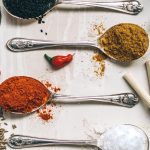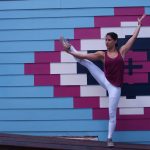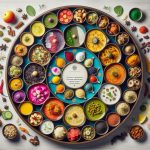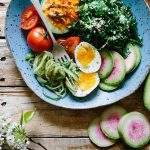The yoga of finding joy in the midst of suffering.
The capacity to feel joy is a gift we all possess. You only need hear a baby laugh to know that the ability to be joyful is a natural and innate thing. But, life being life, we all inevitably go through periods where we can lose touch with it, or worse, feel like we’ve forgotten how to feel joyful at all. Suffering is not something we can avoid as humans. But, how we respond to it can dramatically alter our perception of suffering, which can radically change our whole lives. It is possible for suffering to become a pathway to a much MORE joyful life.
Suffering leads to joy? …Really???
It’s easy (and tempting, in our consumer-driven world) to tell ourselves, “I’ll be happy when I get xyz”, or “I”ll be happy if abc turns out how I want it to”. Many of us believe, largely at a subconscious level, that our happiness is conditional. That it depends upon a set series of things we perceive as necessary to ‘unlock’ it. But what if our happinessdepended principally on our ability to think and choose freely? What if the single most influential determiner of your happiness was you?
Finding the grey between black and white
In our black and white way of looking at the world, we often see pain as an impediment to joy. What about contemplating joy and despair at the same time? Deaths and births coincide in families the world over, proving that two poles of emotion can co-exist, and not only in dramatic situations. In fact, very often the source of everyday suffering is directly connected to the pathway to its alleviation, or to a joy that can exist in spite of pain.
The source of pain holds valuable lessons
Just as nerves in our flesh tell us that if we put our hand in the fire, we’ll get burned, or in the same way an injury can be the greatest teacher to a yoga student, emotional pain can also be a great teacher, and this is what Rumi was talking about.
Attachment
Emotional pain often stems from the inability to let go. Like holding a scalding platter without the ability to set it down, attachment usually starts to hurt after a while. The attachment could be to a person, a place, even a memory. Upon closer examination, our attachment is usually to an idea, or a way of thinking /perceiving. Very often we are attached to people/things/behaviours we no longer need, yet it can be a struggle to let go of the coping behaviours we developed to deal with the original hurt.
A chink of light
Rumi famously said “the wound is the place where the light gets in”. The very awareness of your pain is your opportunity to let the light in. Jane Austen said, “We do not suffer by accident”. Freud believed that “out of your vulnerabilities will come your strength.” Anaïs Nin came up with a beautiful image: “And the day came when the risk to remain tight in a bud was more painful than the risk it took to blossom.”
It takes bravery; letting go of the wallow
Some of us become attached, even addicted, to pain itself, because it has become so familiar. Yet it’s helpful to remember that there is always equal capacity to feel joy as there is to feel pain, if you can open yourself to it. The opening, when it actually happens, tends to be less dramatic than we might imagine.. There can also be an indulgent pleasure in wallowing in our pain, yet this never really helps us grow, and most of us know that deep down.
Shift in mindset
To make the first step from wounded to joyful, a vital shift in mindset needs to be made. That is the understanding that being wounded does not impede your ability to feel joy. It may feel like it, but that is an illusion. You are, after all, the container of your emotions, not the emotions themselves, so proof you can feel pain is also evidence you can feel joy… Start here.
Practice, and all is coming
Cultivating joy is a practice, and it takes practice. It is possible to find ways to feel joy, even in your darkest moments, and there are various ways in which you can prepare yourself for them.
Richard Miller, PhD, founding president of the Integrative Restoration Institute (irest.us) and co-founder of the International Association of Yoga Therapists, advises that we stay aware of the light and darkness in our lives in order to make space for joy in times of pain. He recently told Australian Yoga Journal that, “Every sensation, emotion and cognition, whether positive or negative, is half of a whole. …When you welcome joy into your life, its opposite may come forward in the form of a negative feeling.”
But the point is to practise awareness of both. The ability to sit with conflicting feelings is integral to our ability to find peace. John Keats called this “negative capability: when man is capable of being in uncertainties, mysteries, doubts, without any irritable reaching after fact and reason.”
Being with our pain, letting our wounds be, and not picking at them, will enable us to see them for what they are and heed the lessons they hold for us. This is not a talent, it is a skill anyone can learn, and one we can all practise. Dr Miller recommends (within a meditation), inviting in a sense of joy, and then in turn a feeling that pains you, focusing on feeling the two distinct states, separating them out, and then moving back and forth between them, allowing their physical effects to take hold. Then, attempt to feel both at the same time.
Gratitude
Dr. Miller also advocates the practice of gratitude as a way to cultivate joy. It is helpful to remember that we become what we think and do, so spend some conscious energy on positive feelings and the blessings your life holds. All life holds blessings, so look for them and they will become more vivid to you. And thanks to the strange fact that life is only really ever what we perceive it to be, your life will also become more vibrant.
Of course there are times when it’s a struggle to feel joy. For anyone on the depressive spectrum, this struggle is real. But there are also periods of reprieve in depressive tendency. Use these to reflect on the nature of your wounds and how they can let the light in for you. Allow your Self to guide you through suffering, and you will find out what Charles Dickens and Khalil Gibran meant when they said:
“Suffering has been stronger than all other teaching… I have been bent and broken, but – I hope – into a better shape.” Charles Dickens
“Out of suffering have emerged the strongest souls; the most massive characters are seared with scars.” Khalil Gibran.
All of us suffer, and all of us can crack open to let the light in. We all share this truth. If you feel you need help along the way there are always people there to help, because as Ram Dass said, “We are all just walking each other home”. So, walk joyfully.













